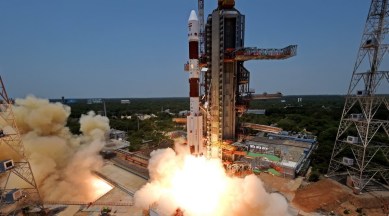Other than the solar flare, the HEL1OS observation also detected evidence of these impulsive events that were seen weakly in the GEOS data.

While on its way to the L1 point to get an unobstructed view of the Sun, another scientific instrument on-board India’s first solar observatory Aditya-L1 was turned on at the end of last month. The instrument that detects high energy X-rays emitted by the Sun observed a “benign” solar flare, ISRO said on Tuesday.
Most Read
The spacecraft that will travel 1 per cent of the distance to the Sun – the farthest of any India-made satellite – has been on its trajectory towards the L1 point for over six weeks. After exiting the Earth’s orbit in September, the spacecraft was to take around 110 days to reach the L1 point. “The spacecraft will start braking to get into the orbit around the L1 point in the first week of January,” an ISRO scientist said.
You have exhausted your
monthly limit of free stories.
Read more stories for free
with an Express account.
Continue reading this and other premium stories with an Express subscription. Use promo code DIWALI30 to get 30% off.
This premium article is free for now.
Register to read more free stories and access offers from partners.
Continue reading this and other premium stories with an Express subscription. Use promo code DIWALI30 to get 30% off.
This content is exclusive for our subscribers.
Subscribe now to get unlimited access to The Indian Express exclusive and premium stories.
The High Energy L1 Orbiting X-ray Spectrometer (HEL1OS) payload was switched on by the space agency on October 27. While it is currently “undergoing fine-tuning of thresholds and calibration operations”, it took the first measurements on October 29. These measurements were found to be consistent with the US Geostationary Operational Environmental Satellites (GOES) satellite, the space agency said. “This was the first observation made by the instrument. During this ten hour observation, it detected a benign C -class solar flare.
Other than the solar flare, the HEL1OS observation also detected evidence of these impulsive events that were seen weakly in the GEOS data.
© The Indian Express Pvt Ltd
First published on: 08-11-2023 at 04:11 IST







